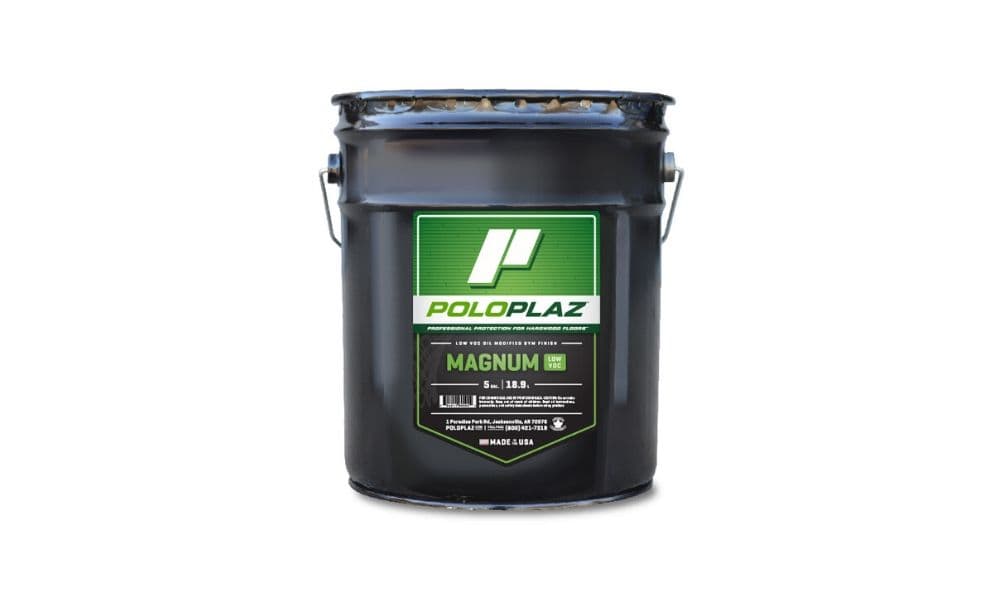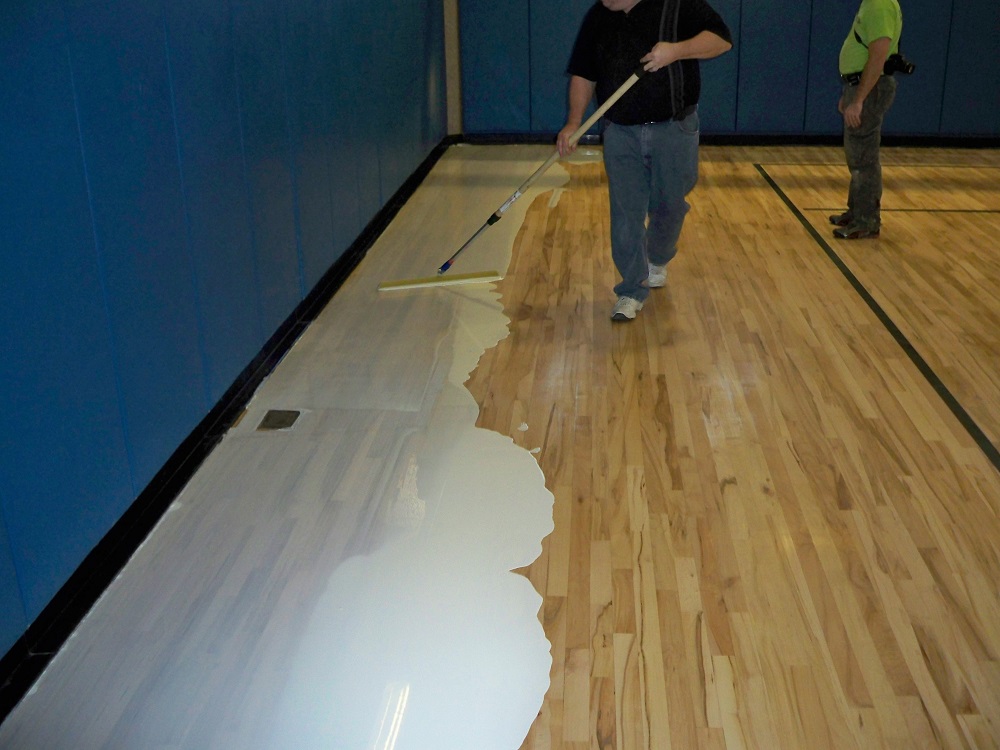The increased use of multipurpose facilities has created some unique problems for the hardwood flooring professional. Portable flooring systems are frequently dismantled and stored, which presents the opportunity for damage to the finish by marring, scratching, etc. Because of the timeframes involved for screen and recoats, sport floor finishes must develop film properties quickly to reduce the risk of scratching the surface during stacking and transportation. PoloPlaz World Class Finish develops chemical and abrasion resistance quickly to minimize damage. PoloPlaz Super Dry can also improve early film property development by reacting with the finish. This reaction improves early chemical and abrasion resistance, which helps to minimize damage upon stacking. Stacking the floors creates very high pressures on the bottom layers of flooring, which can cause permanent damage to the finish. Padding should be used between each flooring section to minimize damage to the finish. Floors should not be stacked before the 7-day initial curing stage.
Stacking Guidelines
- Stack panels face to face, with padding between faces. Do not stack over 14 panels high.
- Stacking material must be free of any surface texture (must be optically clear). Any texture will be imprinted on the finish surface while stacked, and will cause dull spots in the finish. Products such as 2 mil Melinex (available from Plastics Suppliers (800-722-5577)) should be used as stacking material.
- Before stacking, clean sections with PoloPlaz Hardwood Floor Cleaner to avoid scratches from debris. Secure stacked sections well before movement to prevent the panels from rubbing against each other.
- Do not use cardboard or foam as padding. Cardboard can scratch the finish during transportation. Most foams contain plasticizers that chemically attack the finish, causing permanent damage.
Due to their excellent chemical and abrasion resistance, PoloPlaz World Class Finish or Magnum provide the best protection for portable flooring systems. PoloPlaz is the finish of choice on many NBA and major college portable floors.
For complete information on stacking portable floors, contact the flooring system manufacturer.




